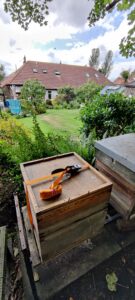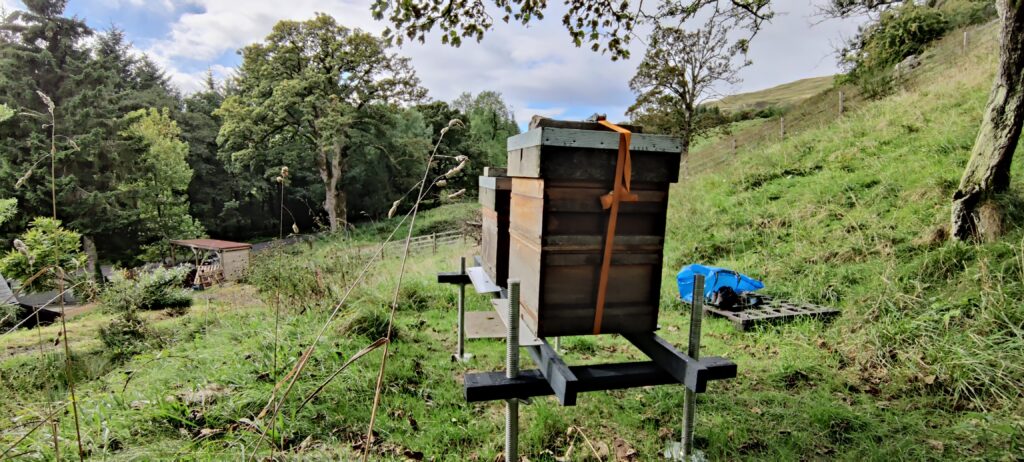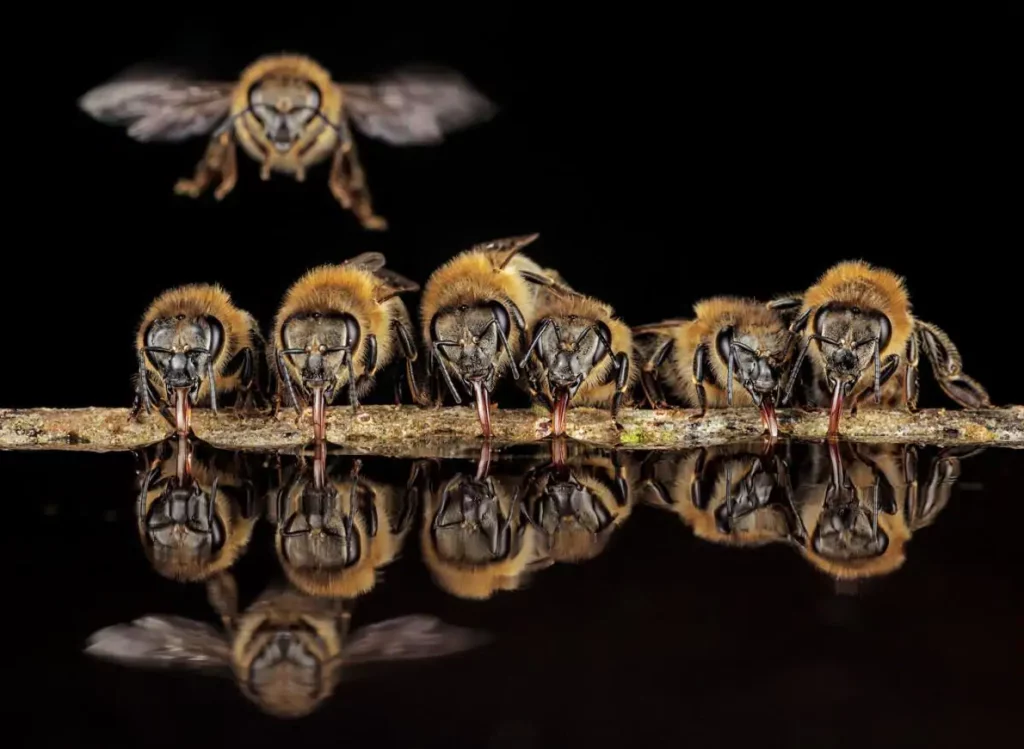Welcome and, if you have purchased a jar of honey, thank you!
2022

The biggest news this year is the relocation of my apiary from the bottom of the garden to an unused, rough and hilly corner of a friend’s country plot. Site prep started in mid-June, but thereafter the already questionable weather took a further downturn and, following the “June gap”, I judged the colonies to be too weak to move. Thus it was the tail end of August before the flit began.
The move to the country meant that I also had to rethink what I stood the hives on. To date, I have always used a ye olde metal garden bench that I’d taken a hacksaw to and repurposed as a hive stand. However, it was to too heavy and unwieldy; besides, the red cancerous rust meant its time was running out. What to use in its place? I discovered a blog entry by The Apiarist which detailed the use of scaffolding jacks as the basis of a hive stand. On the hilly, uneven ground of the new apiary this approach has proved to be the ideal solution.

I’m not sure how the colonies will fair compared to the rich and varied flora of suburban Glasgow/Bearsden. The country move will, however, remove some of the beekeeping stress from the May/June swarming season knowing that, if the colonies do go on the wing, there is no whinging, whining weedgie neighbour to appease. Note that for said neighbour, the bees have decided on only one occasion in seven years to bivouac in their “garden”. In contrast, other neighbours have been a mixture of positively laid back/inquisitive/enthralled about unexpected bee visitors.
Similar to last year, apiary related activities once again took a back seat towards summer’s end. In 2021, a fall damaged my already suboptimal right arm, and meant there was no way I could lift anything for a number of weeks. September 2022 saw me contract Covid for the first time and, as expected, I suffered badly.
In fact, two months on and my lungs haven’t quite recovered and I still have a tickly cough. But the fact that the weather continues to be mild into mid-November probably means my absence has gone unnoticed by the bees! Most importantly postponed activities such as removal of the (meager) honey crop and Apivar treatments have gone ahead. A wet and windy Autumn day will see the small batch of honey being extracted and jarred.

2021
It’s mid-November and I have just finished jarring this year’s honey. 🍯 The label design has been updated (the QR code now includes a link to this page!) and piles of labels have been printed off in anticipation of some sales.
Naturally, nothing can come close to the summer of 2018 and, even taking that year out of the equation, the Spring of 2019 was a poor one. As such, due to continued long spells of bad weather, the honey supers remained on the hives all spring and summer long. I even debated as to whether I should keep them on through winter. However, several sources detailed the downsides to this approach. Besides, there are treatments to the hive which are required in the autumn for which it is advantageous to have the honey supers absent.
So, the honey supers came off a few weeks ago, jars and sundry items were ordered and, as usual, the amount of honey you can harvest even in a poor year, still amazed me.
I hope you enjoy the taste of summer past in a jar.
